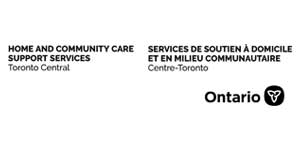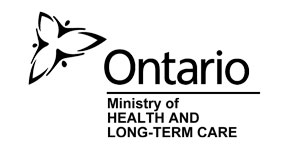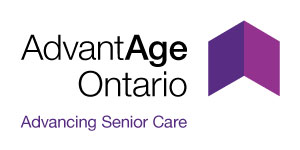Quality Improvement Narrative
The purpose of this “Narrative” is to provide readers with an insight as to how the Rekai Centres homes compare to the Ontario average; our strengths’, areas of improvement and our “action plan” to improve or maintain our most current quality indicators. To ensure accurate comparison, the Rekai Centres utilized the same quality indicators found on the Health Quality Ontario (HQO), the Canadian Institute for Health Information (CIHI) website. This will allow readers to follow Ontario’s trends as well as both homes progress.
Quality Indicators: How to read them
The Quality Indicators (QIs) are measures of health care quality that make use of readily available hospital/Long Term Care (LTC) inpatient administrative data.
There are 9 indicators being followed by HQO and CIHI
HQO:
- Falls - Lower % is better meaning, less falls has occurred
- Worsening Pressure Ulcer - Lower % is better meaning, less pressure ulcers have developed
- Daily Physical Restraints - Lower % is better meaning, less restraints are being applied
CIHI:
- Improved or remained independent mid-loss ADL - Higher % is better meaning, - more residents have improved or remained independent
- Worsened or remained dependent mid-loss ADL - Lower % is better meaning,- less residents have worsened in ADL
- Worsened mood from symptoms of depression - Lower % is better meaning, - less residents have worsened mood
- Taken antipsychotics without a diagnosis of psychosis - Lower % is better meaning, - less residents are taking antipsychotics when not diagnosed with psychosis
- Has pain - Lower % is better meaning, - less residents experience pain
- Worsened pain - Lower % is better meaning, - less residents with worsened pain
Highlighted Indicators
The highlighted indicators uses traffic light colours Green, Yellow and Red to show the difference of each indicator when compared to the Ontario average.
- Green indicators are better than the Ontario average
- Yellow indicators are the same or slightly below the Ontario average
- Red indicators are significantly worse than the Ontario average
The Rekai Centres Ratings
Sherbourne Place

Improved Quality Indicators: "The Green" -88% of all the indicators
- Falls
- Worsening Pressure Ulcer
- Daily physical restraints
- Worsened or remained dependent in mid-loss ADL
- Worsened mood from symptoms of depression
- Taken antipsychotics without a diagnosis of phychosis
- Pain
- Worsened pain
Action plans for these indicators are ongoing to ensure that these remarkable results are maintained. Interdisciplinary care meetings, educations sessions, availability of appropriate equipment (e.g., pressure relieving devices, bed and chair alarms), and audits are some of the interventions that are integrated within the day to day resident care.
Stable Quality Indicators "The Yellow"-0% of all indicators
These indicators are marginally worse than the Ontario average
Worsened or remained dependent in mid-loss ADL SP 35.80%; Ontario 35.20%
- This is the percentage of residents whose status declined on mid-loss ADL functioning (transfer and locomotion) or who continually needs assistance in transferring and locomotion since the last quarter.
- The current rate (35.80%) shows a slight deterioration from last quarter’s (34.20%) data. This change mirrors the decline in transferring and locomotion abilities of some residents.
- Data relating to mid-loss ADLs are discussed in meetings attended by QI Lead, RAI-MDS Coordinator, and Physiotherapist to ensure accurate documentation of residents’ abilities in transferring and locomotion.
Worsened mood from symptoms of depression SP 25.80%; Ontario 25.70%
- This indicator reflects the deterioration of mood due to symptoms of depression within the chosen quarter.
- Observation and documentation about mood symptoms are part of the Charge Nurses’ and Personal Support Worker’s (PSW) daily tasks. The Director of Resident Care (DRC) is informed about changes in mood conditions by conducting a daily review of online documentation system and by visiting every unit. Other available supports come from SMH Psychogeriatric Outreach Team and Psychogeriatric Resource Consultant (PRC).
- Current rate (25.8%) shows an improvement in comparison to previous quarter (29%). Significantly, trend from Q1 to Q4 2015-16 shows a steady improvement to where it is now. This positive change could be attributed to education sessions (September to October 2015), which targeted documentation discrepancies.
Worsened Indicators: "The Red" -11% of all the indicators:
These indicators are considered to be significantly worse than the Ontario average.
Improved or remained independent in mid-loss ADL -Q4 SP 25.3%; Ontario 29.6% (4.3% Difference)
- This is the percentage of residents whose status improved on mid-loss ADL functioning (transfer and locomotion) or remained completely independent in mid-loss ADLS since the last quarter.
- Aside from decline in transferring and locomotion abilities due to medical condition, it also influenced by residents’ readiness to participate in strengthening or maintenance exercises.
- SP has a team of restorative aides, a physiotherapist, and a physiotherapist aide. All of them help improve/maintain residents’ abilities in transfers and locomotion through planned exercises.
- Data relating to mid-loss ADLs are discussed in meetings attended by QI Lead, RAI-MDS Coordinator, and Physiotherapist to ensure accurate documentation of residents’ abilities in transferring and locomotion.
- RAI-MDS assessment audits are completed by the RAI-MDS Coordinator and RAI-MDS back-up to check for discrepancy in assessments, ensuring data accuracy.
- Despite being below the provincial average, the current percentage (20.6%) is better compared to our previous one (19.9%).
Wellesley Central Place

Improved Quality Indicators: "The Green" -88% of all the indicators
- Falls
- Worsening Pressure Ulcer
- Daily Physical Restraints
- Worsened or remained dependent in mid-loss ADL
- Worsened mood from symptoms of depression
- Taken antipsychotics without a diagnosis of psychosis
- Has pain
- Worsened Pain
Action plans for the indicators are ongoing to ensure the improved results are maintained. Committees, care plan rounds and collaboration between different departments and other programs are continued to achieve consistency of care while looking for alternative methods to further improve care.
Stable Quality Indicators "The Yellow"-0% of all indicators
It means that these indicators are within or slightly below the Ontario average.
Falls WCP 15.0%; Ontario 14.80%
- The percentage of falls reflects the number of resident who fell within the last 30 days of assessment.
- The Falls prevention program and committee are developed to meet the unique needs of the residents. Some residents, at high risk for falling, have elected to remain mobile accepting the risk of the increased opportunity to fall.
- The population of WCP is aging and residents with significant cognitive skills are increasing which is also contributing to the increased rate of falls.
Worsened Indicators "The Red"-11% of all indicators
These indicators are considered to be significantly worse than the Ontario average.
Improved or remained independent in mid-loss ADL (activities of daily living) Q4 WCP 13.6%; Ontario 29.6% (16.0% Difference)
- Restorative programs for qualified residents are currently being implemented in tandem with physiotherapy to promote further improvement in independence..
- The restorative program has been altered to ensure the program remains effective and beneficial for residents.
- RAI MDS and Interdisciplinary team are working together to further improve this indicator.
- RAI team are trying new methods of training and recording data to increase this indicator without affecting CMI, further improvement is expected.
- Through below the provincial average of 30.00%, this indicator was an improvement of 1.1% over the last quarter.
Quality Indicator Legend
Common Acronyms Used:
- LTC/LTCH - Long Term Care Home
- ADLs - Activities of Daily Living
- CIHI - Canadian Institute for Health Information
- HQO - Health Quality Ontario
- WCP - Wellesley Central Place
- SP - Sherbourne Place
- QIP - Quality Improvement Plan
Written By:
- Xian Montinola RPN, Quality Improvement and Education Manager at The Rekai Centres Wellesley Central Place
- Jean San Luis BScN, Quality Improvement and Education Manager at The Rekai Centres Sherbourne Place







